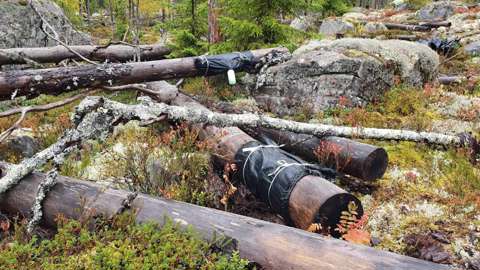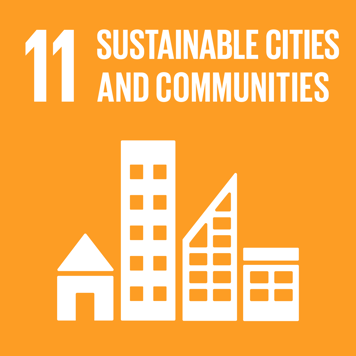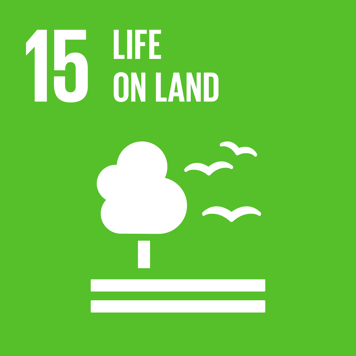Dead Wood Gives Life to the Forest – Effective Restoration in Boreal Pine Forest

Active measures are needed to reduce the negative effects on the forest ecosystem that come with intensive management. The boreal pine forest is such an ecosystem where decades of fire suppression and intensive forestry have had a negative effect on biological diversity. These forests, which were once shaped by natural disturbances such as forest fires, have now become unnaturally uniform, and the lack of dead wood contributes to a decline of species that are dependent on precisely natural disturbances.
Can effective restoration create better conditions for species that depend on dead wood? The long-term forest experiment Effaråsen provides some answers. The article below is a summary of the study Deadwood manipulation and type determine assemblage composition of saproxylic beetles and fungi after a decade.
Restoration of dead wood
The study examined how dead wood structures created in different ways affect biodiversity, with a focus on two important groups: wood-inhabiting fungi and beetles. These organisms play crucial roles, for example in the decomposition of dead wood and thereby in ensuring that the nutrients from the trees can be reused in the forest.
The different dead wood objects that were examined were dead wood in the form of high stumps (living trees cut at 3–4 m height), girdled trees (trees where the stem was intentionally damaged with a harvester head), and logs on the ground (whole trees). The investigation was carried out within 21 entire forest stands that were harvested in the winter of 2012–2013 with varying amounts of retention. 6 of the 21 stands were burned in the summer of 2013. Thus, there is a gradient of retention levels: from a relatively low level to a high level of retention. In addition, burned forests were controlled. The retention consists of both left living trees and created dead wood. Inventories of wood fungi and beetles were carried out in the summer of 2022. Wood fungi were identified through wood samples and DNA sequencing. Beetles were caught with traps mounted on dead wood objects.
What happens when the forest is restored?
The study showed that fungi and beetles respond differently to restoration measures and prefer different types of dead wood.
-
Beetles thrived best in standing dead wood, which provides the warmth and conditions they need to develop.
-
Fungi preferred lying dead wood, which retains the moisture required for their growth and decomposition processes.
-
Both fungi and beetles had unique species compositions depending on whether the wood was standing or lying, which underlines the importance of maintaining a variation of dead wood in restored forests.
-
Burned dead wood hosted more similar communities of fungi and beetles compared with unburned wood, which suggests that controlled fires can create favorable conditions for both groups.
In this study, there was no clear result indicating that the different retention levels with different amounts of left living trees had any significant effect on the two organism groups. This means that for species dependent on dead wood, the preservation and creation of different structures of dead wood is the key to restoring biodiversity.
What does this mean for the conservation of biological diversity?
Natural pine forests are shaped by recurring disturbances such as fires and storms, which create open, sunlit conditions and a variation of dead wood. Species that naturally live in pine forests are adapted to these conditions and can recover as long as their habitats are restored and preserved.
To promote biodiversity in pine forests, conservation efforts should focus on:
-
Providing a mix of standing and lying dead wood to support different species.
-
Using controlled fires to create stable habitats for fungi and beetles.
-
Ensuring long-term restoration efforts by taking necessary retention measures such as preserving restored areas and structures in the landscape.
We will review and publish your comment as soon as possible.






